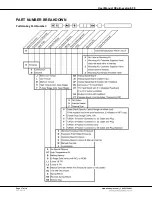
User Manual RCx-B-xxxAx-8.09
Page 12 of 18
www.hanbayinc.com | 1 800 315 4461
Rev.2021.8 [email protected]
Battery Fail Safe Function
1. In the event of a loss of power or signal, the battery will maintain power to the P1 processor and
trigger the actuator to move the valve to its designated fail-safe position, using power from the
battery.
2. Once the valve has reached its fail-safe position, and after about one minute, the P1 processor will
go into sleep mode to preserve the battery life.
3. The actuator will not respond to commands until the power supply is restored.
Note:
The battery will maintain a charge for up to 2 months without power being applied.
The fail-safe actuation can be performed for 30 cycles on the charge available in the battery.
During normal operation, from totally discharged, the batteries will take 2 hours to re-charge.
If in a critical fail-safe application, the battery function should be tested monthly.
Testing Battery Fail-Safe
-
The batteries will be continuously on charge when power is available to the actuator.
-
Regardless of application, the fail-safe function should be tested monthly by signaling the unit to the
position opposite the fail position, removing the power to the actuator and observing whether the
actuator reaches the desired fail position.
-
The battery voltage can be measured with a multimeter set for DC volt measurement.
Measure battery
voltage between the
connector terminals.
Value should be:
7.9 ± 0.4 VDC


















